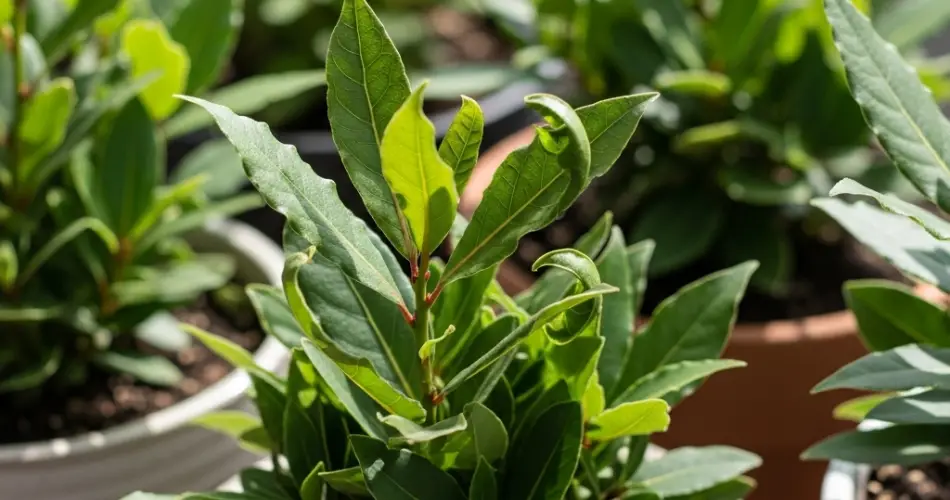Bay leaf trees (Laurus nobilis), also known as bay laurels, are aromatic evergreen shrubs widely used in cooking. Known for their rich, savory leaves, bay trees can be grown successfully in containers, making them an excellent option for gardeners with limited space. Whether you live in a small apartment or have a sunny backyard, growing bay trees in pots is both manageable and rewarding.
This guide will walk you through everything you need to know about growing bay trees in containers—from choosing the right pot to harvesting your first aromatic leaves.
Why Grow Bay Trees in Pots?
Bay trees can grow up to 30 feet tall in the ground, but when planted in containers, their growth is naturally limited, making them easier to manage. Container gardening also provides several advantages:
-
You can control soil quality and drainage more easily.
-
It allows you to move the plant to a sunnier or more sheltered location.
-
Potted bay trees are easier to prune and shape into decorative forms.
-
If you live in a cold climate, pots can be brought indoors to protect against frost.
Choosing the Right Container
Bay trees prefer a deep, sturdy pot with excellent drainage. Choose a container that is at least 12–16 inches wide and deep, with holes at the bottom to allow excess water to escape. Since bay trees grow slowly, they don’t need frequent repotting—but giving the roots enough room early on encourages a healthier plant.
Clay or terracotta pots are ideal because they are heavy and won’t tip over easily, especially when the tree matures and becomes top-heavy.
Soil Requirements
Bay trees prefer well-draining, slightly acidic to neutral soil. A good potting mix for bay leaf trees should include:
-
Two parts high-quality potting soil
-
One part perlite or coarse sand (for drainage)
-
A handful of compost or aged manure (for nutrients)
Avoid heavy, clay-based soils that retain too much water, as this can lead to root rot.
Planting and Positioning
Bay laurels grow best in full sun to partial shade. Place your container in a location that gets at least 6 hours of sunlight per day—such as a sunny patio, balcony, or windowsill if growing indoors.
When planting a nursery-bought sapling:
-
Fill the pot halfway with your prepared soil mix.
-
Gently remove the bay tree from its current container and loosen the roots.
-
Position it in the new pot so that the root ball is about an inch below the rim.
-
Fill in around the roots with soil and press down lightly.
-
Water thoroughly to help the plant settle in.
Watering and Fertilizing
Bay trees don’t like soggy soil. Water only when the top inch of soil feels dry, and make sure the pot drains completely. During the warmer months, you may need to water more frequently, but avoid overwatering—bay laurels are somewhat drought-tolerant once established.
Fertilize your bay tree every 4–6 weeks during spring and summer using a balanced liquid fertilizer or slow-release pellets. In fall and winter, reduce feeding, as the plant’s growth slows down.
Pruning and Maintenance
Bay trees respond well to pruning and can be shaped into topiaries, small trees, or bushy shrubs depending on your preference.
-
Prune in early spring to encourage fuller growth.
-
Remove any dead or crossing branches.
-
Trim the top growth to maintain your desired height and shape.
Every 2–3 years, you may want to refresh the soil or repot the tree into a slightly larger container if it becomes root-bound.
Pest and Disease Control
Bay trees are relatively pest-resistant but can occasionally attract:
-
Scale insects
-
Spider mites
-
Aphids
If you notice sticky leaves, discolored foliage, or small insects, wipe the leaves with a damp cloth or spray the tree with a mild insecticidal soap or neem oil.
Ensure proper air circulation around the plant to prevent fungal problems. Avoid letting water sit on the leaves or in the tray beneath the pot.
Overwintering Bay Trees
Bay laurels are hardy in USDA zones 8–10 but may suffer in colder climates. If frost is a risk in your area:
-
Move the container indoors during late fall.
-
Place the plant in a bright room or greenhouse, away from direct heaters.
-
Water less frequently in winter, just enough to prevent the soil from drying out completely.
Once spring returns and temperatures remain above 50°F (10°C), move your bay tree back outdoors.
Harvesting Bay Leaves
Bay leaves can be harvested year-round, but the best flavor comes from mature, dark green leaves. Pick just a few at a time and allow the plant to continue growing.
To use in cooking:
-
Rinse the leaves thoroughly.
-
Use fresh or dry them for later storage.
-
Dried leaves have a more concentrated flavor and should be stored in an airtight jar in a cool, dark place.
Final Thoughts
Growing bay leaf trees in pots is a practical and rewarding project for any home gardener. With the right setup, regular care, and a sunny spot, you can enjoy a steady supply of fragrant leaves for soups, stews, and sauces all year long. Whether you’re cultivating it for culinary use or ornamental beauty, a bay tree is a charming addition to your container garden.



